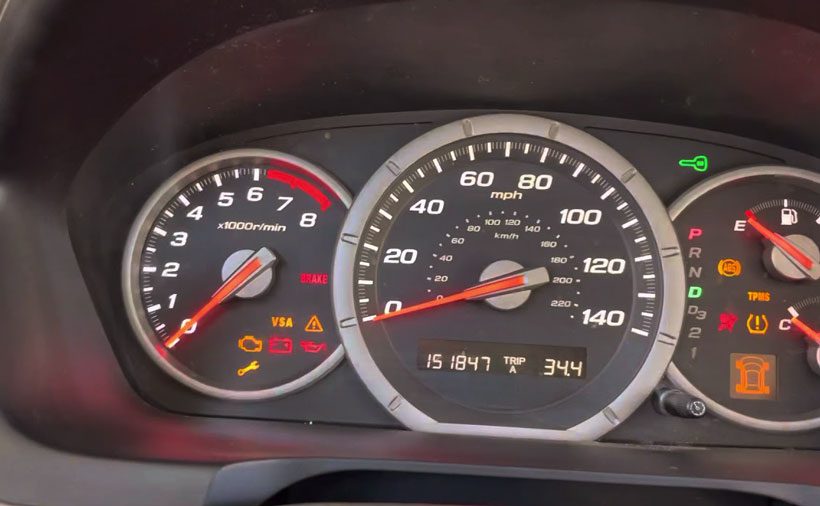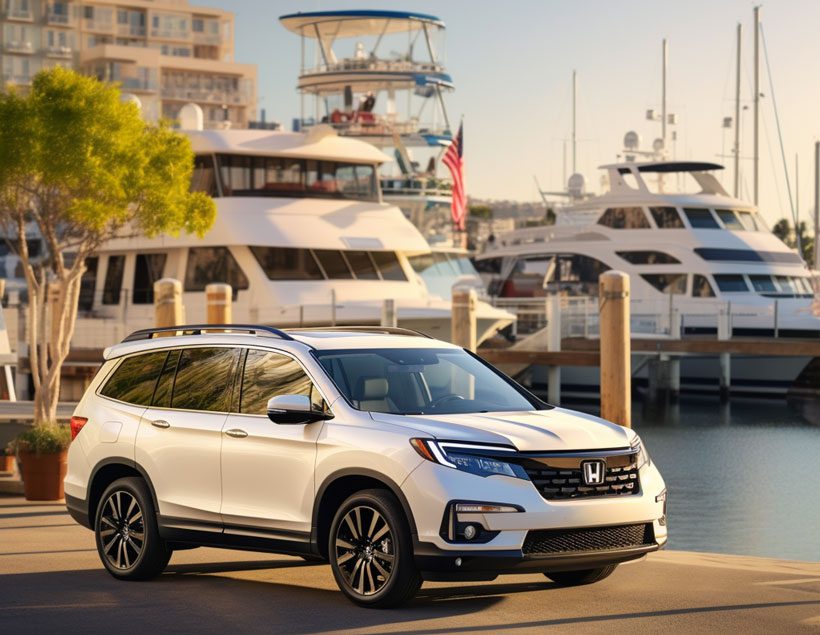Fixing Honda Pilot ABS Light On: Causes and Resetting Tips
The Anti Braking System or ABS is an essential function of a car that helps prevents collisions with hard brakes. The Honda Pilot is equipped with such a system and if there is any malfunction regarding ABS, an indicator light comes up on the dashboard.
Now how do you proceed with fixing Honda Pilot ABS light on? The causes can be; faulty speed sensors, the relay fuse is blown, low tire pressure, and brake fluid being low. The best way to determine the cause is by using a diagnostic tool. Most of the time replacing sensors, relay fuse, and brake fluid fixes the issue.
In this article, we will cover the causes of ABS light on and resetting tips for the Honda Pilot ABS light. Additionally, with a few smart tips and necessary pointers that will keep your Pilot in top shape.
Causes For A Honda Pilot ABS Lights On
The Honda Pilot ABS light blinking might seem random but it is not. The indicator lights are there for a reason and if any of the pops up you should be concerned.

The ABS light can come up for reasons such as broken speed sensors, low tire pressure, shortage of brake fluid, and blown relay fuse. The best way to understand what is happening is to use a diagnostic tool like the OBDII scanner.
The OBDII scanner can read the error codes and display them. Then you can use the manual to determine what is the cause of the issue. After that, it is a matter of replacement and mechanical work.
Fixing Honda Pilot ABS Light On
Now that you know the cause of the ABS light-on problem, let’s check out the fix for each cause.

Replacing Broken Speed Sensors
Each wheel of the Honda Pilot comes equipped with a speed sensor. These speed sensors determine if the ABS should be switched on. They are important for your safety as a driver.
As a result, if any of the sensors stop working the ABS indicator is gonna come up. So, if your diagnostic tool shows the codes for faulty speed sensors, the sensors need to be replaced.

Step-By-Step Guide On Replacing Speed Sensors
The replacement of the speed sensor is tricky work. However, they can be divided into a few simple steps:
Step-1: Remove the tires and use a jack stand to keep the car raised safely.
Step-2: Identify the speed sensor and remove the bolts and brackets that keep it in place.
Step-3: Remove the first connection from the wheel hub.
Step-4: Remove the second connection that is connected to the chassis. There is an orange connector that connects it with the chassis.
Step-5: Take the new sensor, connect it in the same places and bolt it with the brackets and bolts in its place.
Step-6: Reinstall the wheel again and drive it for a short while to turn off the ABS indicator light.
If you follow these steps you can easily replace your broken sensor. Here is a youtube video that can help you with visual guidance;
Replacing Relay Switch
There are many relay switches that control the electronics system in your vehicle. They are typically found in the engine compartment, under the dashboard, or in the fuse box. If one of them is blown the indicators might not work properly. So, your ABS system might suffer if the ABS relay is blown.
Check your manual for the location of the ABS relay in the relay switch compartment and simply replace it following the manual. No tools are needed, you just swap it out for a new one.
Fixing Low Tire Pressure
Low tire pressure can also trigger the ABS indicator in Honda Pilot. As the speed sensor is directly connected to the tire hub, it can monitor wheels very well. So, if the tire pressure is low, simply add air and the indicator should turn off.

Filling New Brake Fluid
Every car has brake fluid and they make sure the braking system works properly. If the brake fluid is low, the ABS system would not work well either. So, the ABS indicator would be blinking.
Brake fluid can be low if there is a leakage, worn down brake pads, etc. So, refilling the brake fluid is a good way to ensure your ABS system works properly. Follow these steps to replace your brake fluid:
Step-1: Locate the brake fluid reservoir under the hood.
Step-2: Check the level and see if it needs filling.
Step-3: Choose the appropriate brake fluid for your car.
Step-4: Fill the reservoir and secure it tightly.
Resetting Tips for Honda Pilot ABS Light On
The ABS light on your Honda pilot can blink as a glitch too. For those situations, resetting is the way to go. The easiest way to reset would be with an OBDII scanner. Simply connect the scanner and clear the error codes. Then the ABS light will reset itself.
Another way is to disconnect the battery to reset it. First, remove the two cables that are connected to the battery. Then use the electronic-driven equipment such as horns, blinkers, etc. to drain out the electricity that is left in the system. After 15 mins reconnect the battery and the ABS light should reset itself.
How Important is The ABS System?
Now you might be wondering whether fixing the ABS light on would be worth it or not. Well, if the ABS light is on means there is something wrong with the ABS. So, asking this question is quite normal.
The ABS system is certainly a good safety feature for emergencies. As a driver when you use hard brakes to stop the car, you lose all maneuverability. That can be fatal in many situations. For example, if you want to avoid a collision with a car simply braking would just stop your car but it will not let you move from your trajectory.

The ABS is a system to keep the maneuverability intact while using hard brakes. So, a driver can slow down immediately and also move out of the way at the same time. This can help to avoid collisions and keep you out of major accidents. So, the ABS system is a must-have feature in modern cars.
That is why there is an indicator in your Honda Pilot to show the state of the ABS system. It is just as important as your seatbelts and other things in your cars that you can see that keep you safe.
If you’re experiencing an ABS light issue in your Honda Pilot, you may find our article on Toyota Prius brake light and ABS light on helpful. Although it’s specific to the Toyota Prius, it provides insights and potential solutions that may be applicable to your Honda Pilot as well. Additionally, if you’re looking for general information on how to turn off or reset the ABS light, you can check out our article on how to turn off and reset ABS light for useful tips and instructions.FAQs
Here are some frequently asked questions that are related to the topic, that you may want to know.
No, not all OBDII scanners support every car. There are certain fixed ones that can read codes for certain cars. So, if you are looking to buy one or trying to use one, check if it can read the error codes of your car.
It might happen because of a glitch and you can reset it with a diagnostic tool like the OBDII.
The ABS will only affect your braking system, not your engine. So, your car will run fine.
Outro
For a quick recap, the process of fixing the Honda Pilot ABS light can be replacing speed sensors, replacing the relay switch, fixing low tire pressure, and filling new brake fluid. These will fix the ABS and will turn off the ABS indicator.
If you read the article you already know the process of identifying and fixing this issue. So, do not avoid your ABS indicator and look into it as early as possible. The ABS can help to keep you and your family safe in times of emergencies.

